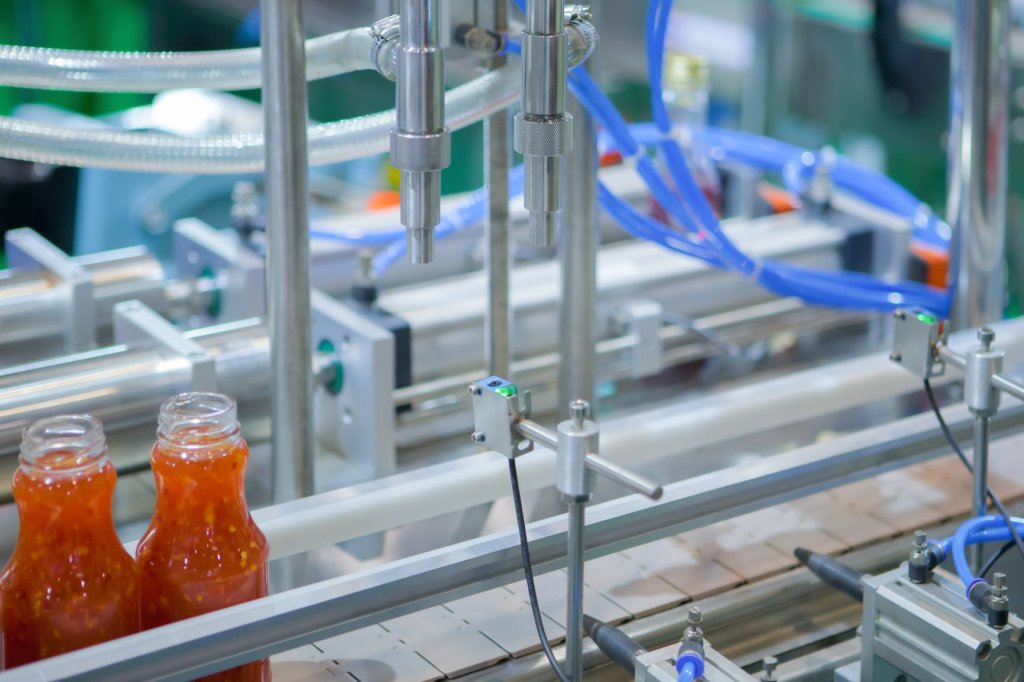With a worldwide population that’s growing exponentially, countries around the globe are finding it increasingly difficult to provide their citizens with an adequate supply of food and beverages. However, thanks to advancements in technology and innovation, businesses have discovered a way to meet this demand through modernizing food processing and handling facilities. With the help of food processing equipment, these facilities can utilize applications such as conveyor systems, prep surfaces, and bottling lines to increase production. As a result, people are obtaining the sustenance they need in record time. In addition to maintaining production, these facilities are also adapting to current and new health standards resulting from the ongoing COVID-19 pandemic. With the help of plastic materials, opting to use performance plastic parts has shown to lead to efficient production and safety without the expensive costs.
Benefits of Plastics on Production
The food processing and handling industry is one that relies heavily on durable parts to keep their machines and applications running. Without reliable materials, these facilities would fail to meet the demands of their customers. Although some facilities still use traditional metal parts, they are severely limiting the potential of their applications.
Most performance plastics are built for the often-harsh food processing environment. There are a variety of plastic materials to choose from, and each have their own benefits depending on the intended use of the material. Some of these materials include nylon, acetal, UHMW, PTFE, and HDPE. Many of these products are typically used to create parts for the machinery and share a lot of the same characteristics. For example, acetal, nylon, and UHMW have low coefficients of friction and exceptional durability, making them ideal for keeping machines running without frequent lubrication. In addition, PTFE is known for its stability in wide temperature ranges, making it useful in areas with elevated temperatures like ovens. No matter how extreme the environment can become, applications made from performance plastics can handle the pressure.
Improving Safety with Plastics
When it comes to safety, food processing facilities are often the last line of defense to prevent food born illnesses and hazards. That is why it is vital for these facilities to use applications with materials that can be frequently cleaned, inspected, and sanitized without affecting the quality of the food and beverages they touch.
To help eliminate this potentially disastrous issue, some plastics have been designed for NSF, FDA, USDA, and 3-A Dairy compliance. These plastics can withstand regular contact with harsh cleaning solutions and do not deteriorate over time. In addition, many of the plastics that can be used in these facilities have low water absorption rates and will not rust. The same cannot be said for metallic alternatives.
PVC strip curtains also play a key role in protecting the products inside these processing plants. These curtains are used to create separation between two areas and provide a variety of benefits including reducing contamination and saving energy. For example, these curtains do a great job of reducing the airflow between areas and can keep out dust, fumes and other harmful particles that might lead to contamination. But perhaps the biggest benefit of these curtains will be noticed in cost savings because this restriction of airflow also helps trap cool or warm air inside the rooms.
Even though food processing facilities take extreme measures to prevent contamination, there will inevitably be instances where a foreign object ends up in the product. Thankfully, some plastics can be made in vibrant colors, making it easier for employees to discover the material after a visual inspection. These materials can also be made to be x-ray detectable, so they can be found if visual inspections fail.
Although keeping customers safe from foodborne illnesses and hazards is certainly a priority, keeping employees safe involves an entirely different approach. The employees that work in food processing and handling facilities often work next to machinery that can be dangerous if rules and regulations are not followed. To help reduce this danger, many facilities have installed machine guards to prevent accidents. In addition to protecting the products from contamination, these barriers are also used to protect operators from the potential impacts of ejected materials or broken tooling. Machine guards are commonly made from durable plastic materials like polycarbonate, PETG, acrylic and clear PVC.
Additional Articles
If you’d like to learn more about the benefits of performance plastics in food processing and handling, and other related industries, read our other articles:
Uniting Performance Plastics with Conveyor Systems
Anti-Microbial Solutions – The Next Stage of Protection?
Acetal: The Metal Industry’s Worst Nightmare?
How Plastic Sheet Is Used in The Food Processing Industry
Contact Us
At Piedmont Plastics, we offer a wide variety of performance plastic materials for your industrial and protective applications. Contact us to inquire about our various solutions or call us today to speak with a plastics expert!
